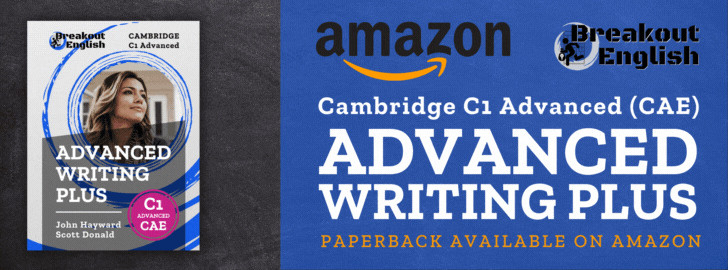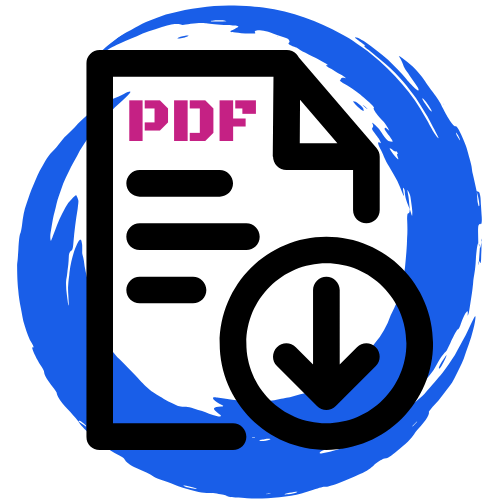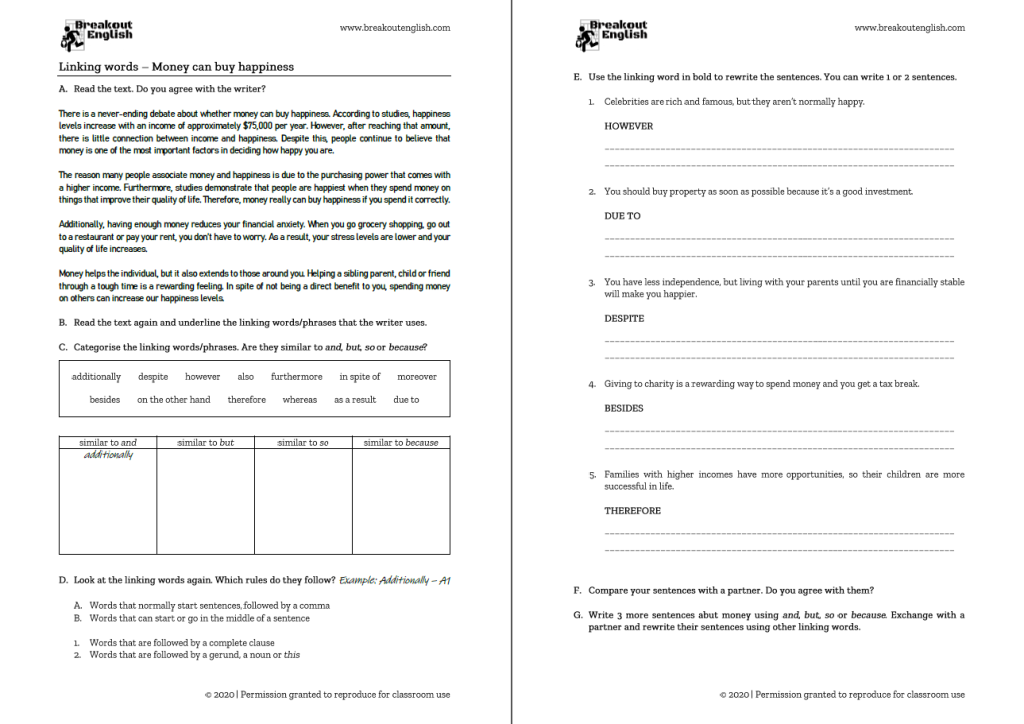Linking words, also known as linkers, cohesive devices, connectors and transition words, are a vital part of writing. Often when we teach English, we feed vocabulary and phrases to students which, if we’re not careful, can start sounding forced. For me, linking words are the exception to that. I find that a solid lesson with these special words can almost certainly help improve a students writing regardless of the level. It’s not just because it appears in writing marking scales for every official exam there is, it’s because they actually work. Without linking words, texts can feel dull and disconnected. That’s definitely not the image we want to give when trying to prove our level of English.

Contents
What are linking words?
There are linking words and phrases for different purposes. You can find exhaustive lists of linking words examples all over the web, but the important thing is using them to good effect.
If your writing was like the human body, the content words would be the flesh and the paragraph structure would be the skeleton. Linkers are like the joints of your writing. They help to connect the different parts together and interact with each other. An essay with good cohesive devices will flow and be easy to read. In fact, it’s practically impossible to write without them. You can do a fun writing activity with a consequences game in another post.
Linking words at different levels
Let’s use Cambridge writing scales as a guide for what we should be using at different levels. At B1 Preliminary (PET) candidates are expected to use basic linking words. Basic linking words are essentially and, so, but and because. At B2 First (FCE) level, a variety of linking words should be used. While by C1 Advanced (CAE), candidates are using cohesive devices to generally good effect.
Although the terminology shifts between levels, the concept is the same. An exam candidate’s writing should be connected together in a way that makes it flow from one section to another using words that help to achieve said outcome. Notice that it’s not until C2 Proficiency (CPE) level that candidates should be able to use cohesive devices with flexibility.
For more information about how Cambridge writing is marked, check out the different scales here.
If you’re looking to improve your writing for the Cambridge Advanced exam, consider our book Cambridge Advanced Writing Plus.

Linking words examples
There are so many transition words you can use in your writing, but having a ridiculously long list isn’t the best option in this case (and I’m normally a big fan of lists). When I teach writing, I tend to focus on a selection of common and useful linking words. These can be associated with their purpose. Words similar to and are used to add additional information. Words similar to but are used to contrast ideas. Words similar to so provide result and those similar to because develop reason.
| ADDITION similar to and | CONTRAST similar to but | RESULT similar to so | REASON similar to because |
| additionally also moreover besides furthermore | despite however in spite of on the other hand whereas | as a result therefore | due to |
This list is not exhaustive, but it’s enough for 90% of learners who are using linking words in English. These are good cohesive devices for an essay, a formal letter or a report. They can be used in a wide range of styles and contexts. Keep in mind that linking words and phrases are also a strong indication of formality in a text, but they aren’t the only factor.
The other essential factor to consider with linkers is how to use them in a sentence. Different ones need different grammatical structures surrounding them. This is what the activity below focusses on in detail.
The materials
There is little doubt that any exam preparation course will include a lesson on producing cohesive writing. These materials associate complex linkers with simple comparison words before putting them to use. We’ll consider both the meaning and the use of linking words and phrases. The topic focuses on money and wealth, which can pop up anywhere from B1 level onwards. Use them to improve writing skills, especially in formal writings like essays, reports and proposals.
EXAM PART: Writing
EXAM SKILLS: Using cohesive devices to improve organisation
TOPIC: Money
TIME: 60 minutes
PREPARATION: One copy of the worksheet per student
Download



